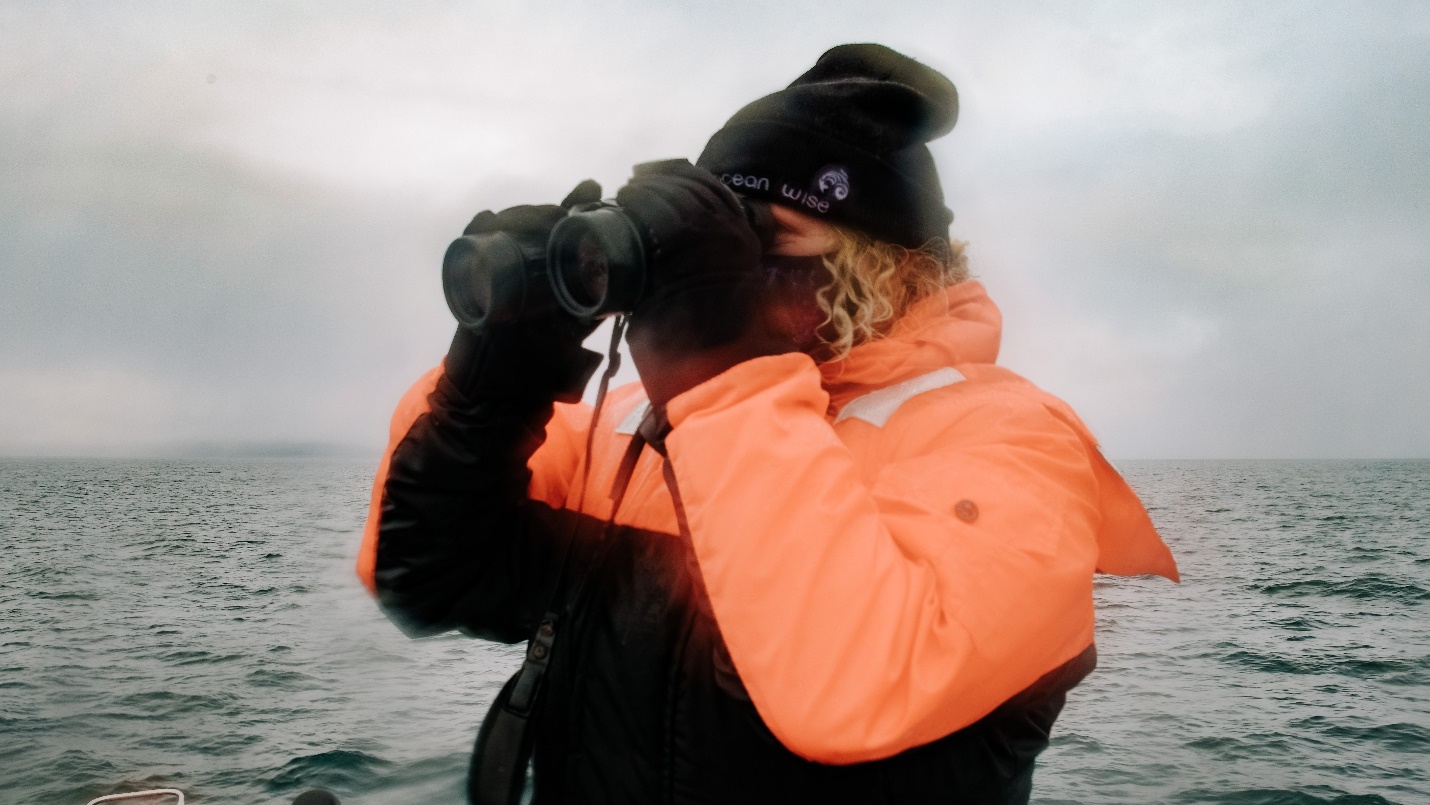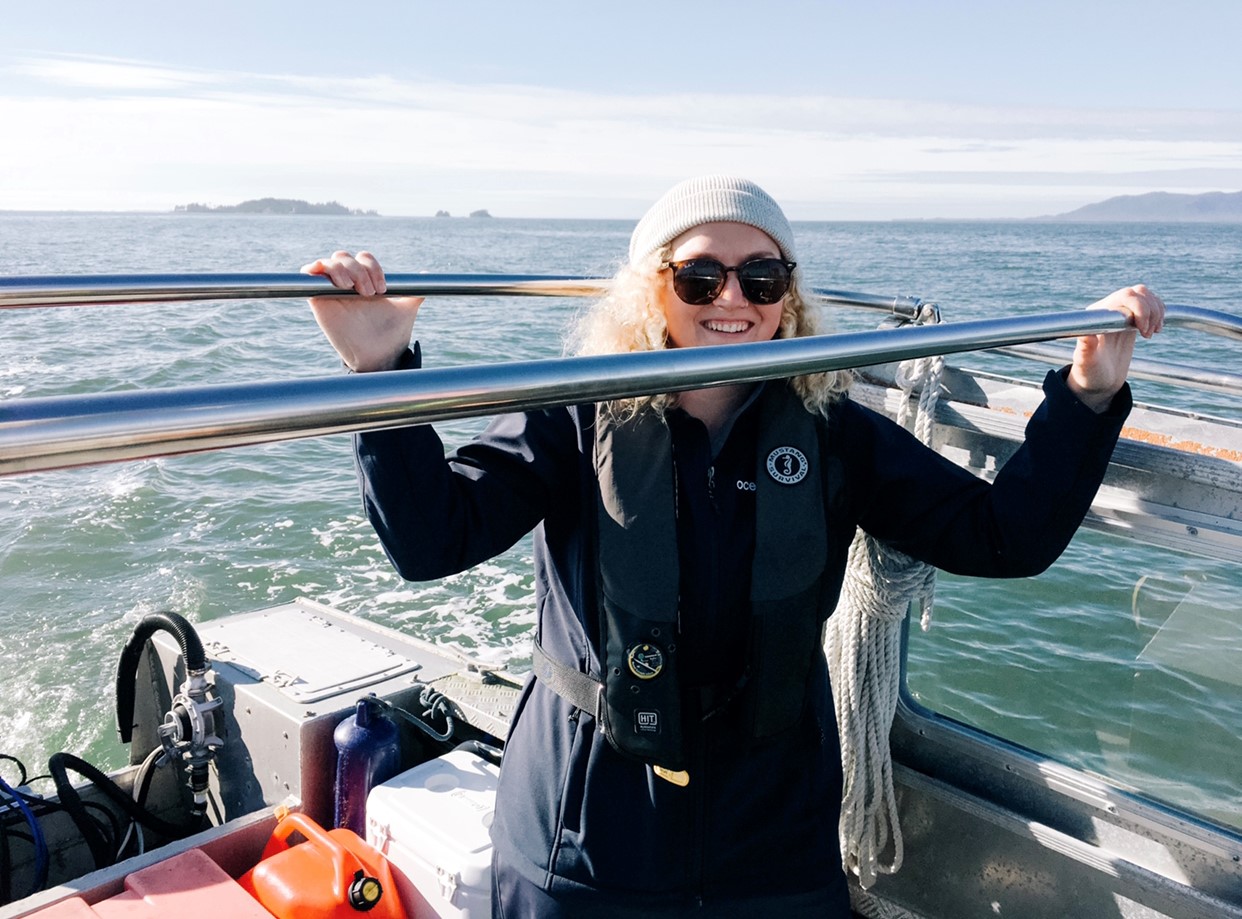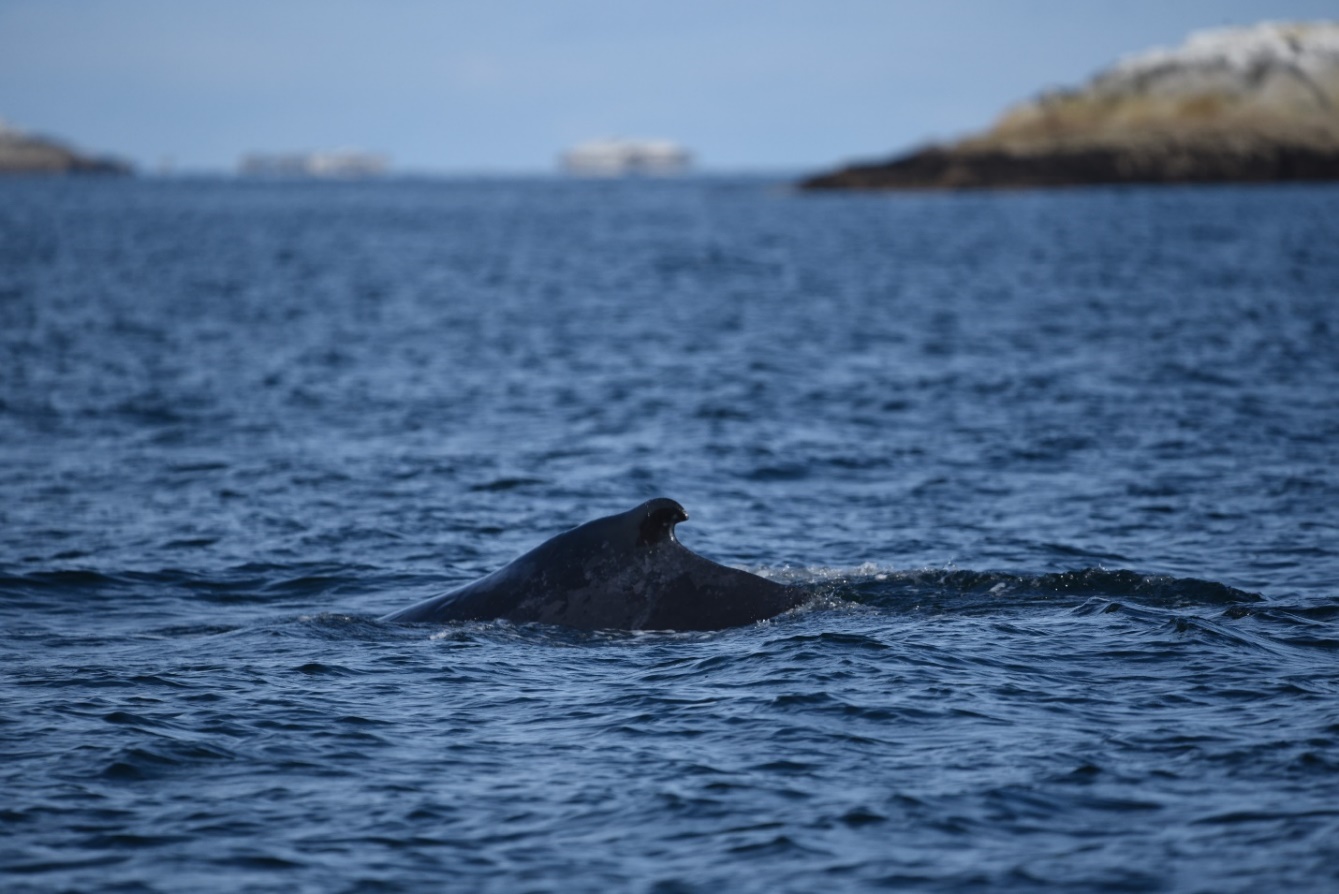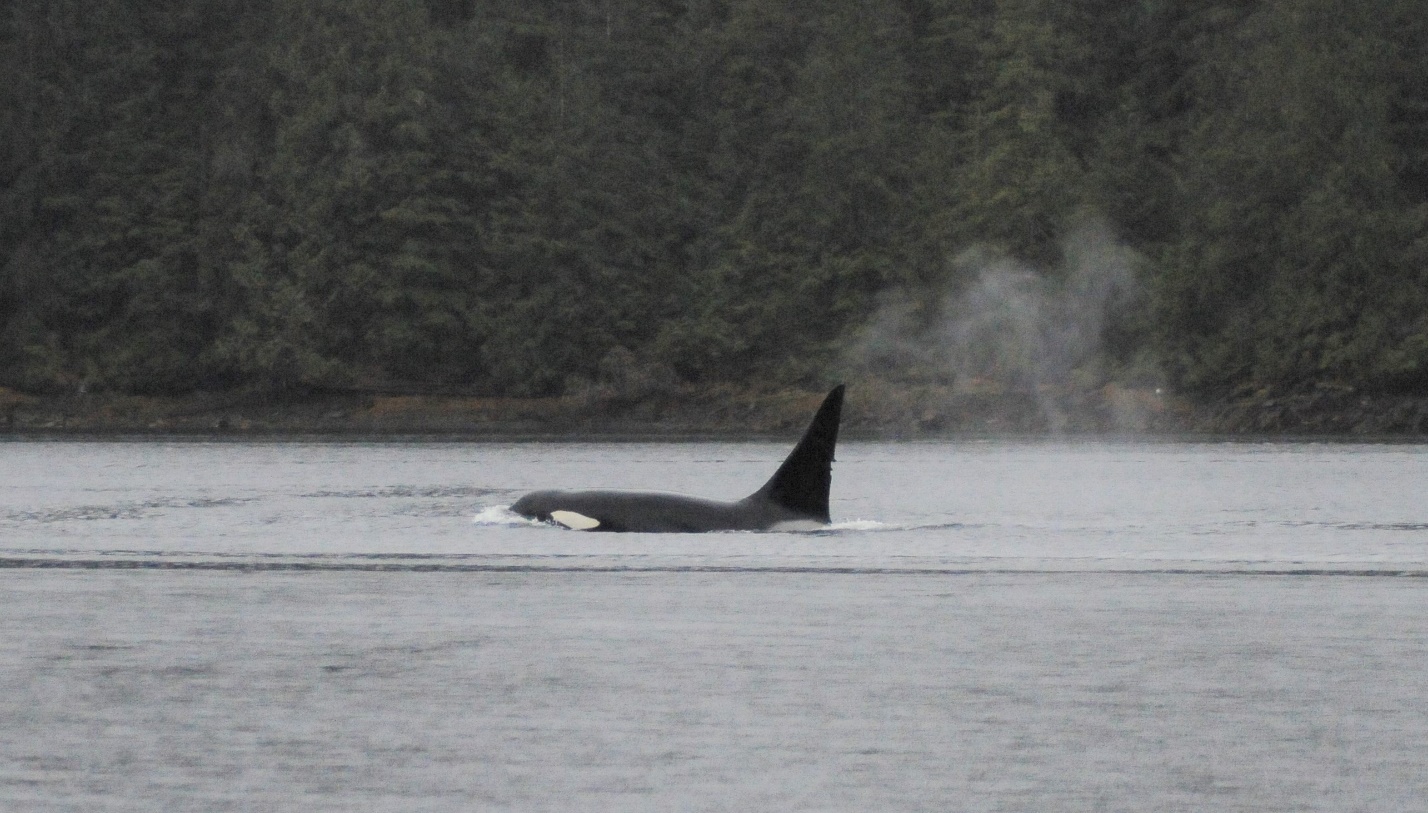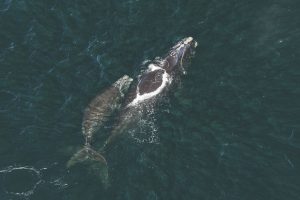For as long as I can remember I have wanted to work in ocean conservation. Gaining relevant experience in the field, however, remained a mystery. Like a planktonic jelly adrift in the ocean, I was in the right place but unsure of my direction. Then, along came the Ocean Bridge Direct Action program, an immersive opportunity to work with a marine conservation organization and gain experience in the field I am passionate about. I was given a placement with the North Coast Cetacean Research Initiative (NCCRI) in Prince Rupert, researching local populations of whales, dolphins, and porpoise and assisting the B.C. Cetacean Sightings Network.
Prince Rupert is in the Northern Great Bear Rainforest, in the heart of the Coast Ts’mysen traditional territory, and is known as one of the rainiest cities in Canada. The rain, however, has not dampened my spirit. I feel very fortunate to be living and working in such a beautiful place with the small but mighty NCCRI research team.
My placement began in September, which also marks the end of the summer field season due to severe fall and winter storms. Luckily, I was able to head out on the water with the team for their seasonal fieldwork. We were fortunate enough to observe humpback whales, harbour porpoise and killer whales. The stormy days allowed for ample office work, which included whale photo identification and mapping cetacean sightings. During this time, I gained appreciation for the power of spreadsheets and the importance of gathering citizen sightings through the B.C. Cetacean Sightings Network (BCCSN). Together, this information can provide powerful insights into the distribution of cetaceans, or whales, dolphins, and porpoises in B.C.

